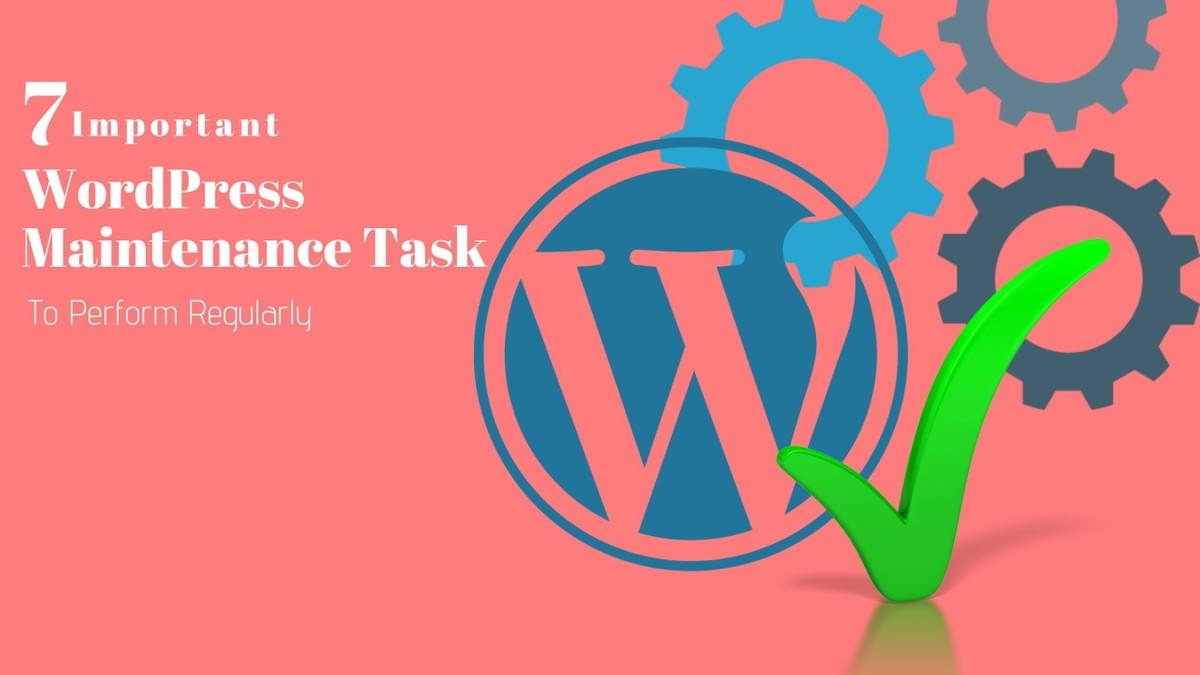
After starting a blog, do you ever think, which Wordpress maintenance task you should be performing regularly. Most of users don’t perform maintenance checks unless something breaks. By considering regular maintenance tasks, you can make sure that your WordPress site is always performing at its best. In this blog, we will share 7 crucial WordPress maintenance tasks to perform regularly, and how to do each one of them.
When You should you perform WordPress maintenance tasks?
If you have a highly busy website with a lot of traffic, then you should perform maintenance task, every three months that why most of reputed Wordpress website design companies keeps working on their Wordpress websites maintenance .
For low traffic websites and content, you need to do these maintenance tasks every six months.
Now, let’s take a look at the essential WordPress maintenance tasks you need to perform and how to do them.
1. Change All Your WordPress Passwords
Passwords are your primary protection shild against unauthorized access to your website. Always create strong unique passwords for all your online accounts including your WordPress website, FTP accounts, and database.
That’s why WordPress security experts recommend changing your WordPress passwords on daily basis. This includes passwords creation for your WordPress admin area, FTP or SSH accounts, and your WordPress database password.
2. Create a Complete Backup of Your Website
Taking backups of your website is one of the most important maintenance task. There are some of great WordPress backup plugins available that can help you completely automate the WordPress backup process. However, sometimes your backup solution may suddenly stop working without you even notification.
Once in a while, you should manually run your backup plugin to create a complete backup of your website. After taking the backup, you need to verify that your backup files are properly stored at the remote location of your choice (Dropbox, Google Drive, etc).
3. Check and Delete Spam Comments
To fight against spam comments, you can use "Akismet". It offer spam fighting service to protect your WordPress sites from comment and contact form spam.
It will automatically keeps spam away from your comment moderation queue.
Although, sometimes Akismet may end up marking a legitimate comment as spam. Whenever you have some time, you need to take a quick look at the spam comments to ensure that there are no real comments incorrectly marked as spam.
4. Optimize Your WordPress Database
WordPress stores mostly data in WordPress database. Data may be all your content, comments, users, and other settings.
But if you are not optimize your database so long. Your database may save a lot of unnecessary data. This may leads to increases your WordPress backup sizes which may affect uploading, downloading, and restoring backups.
Proper optimization of your WordPress database allows you to clean up clutter, defragment tables, and improves database performance.
For step by step instructions, see our guide on how to optimize your WordPress database with one click.
5. Find and Fix 404 Errors
404 errors that occur because a user mistyped an address or requested page does not exist. It can cause bad user experience as well as bad for ranking in search engine. So it is good for your website to find and fix all 404 links as soon as possible.
6. Test All Your WordPress Forms
Lots of form builder plugins like WPForms make it super easy to create beautiful forms on your website.
Sometimes, due to misconfiguration on your WordPress hosting server or your email service provider, sometimes these forms may suddenly stop sending emails.
You need to check all Wordpress forms on your website to make sure that they are working properly. If a form is not working, then see our guide on how to fix WordPress not sending email issue.
7. Check and Update All WordPress Files
WordPress develop with a built-in system to manage updates for WordPress core, plugins, and themes. Always install the latest version of WordPress and keep all your plugins and themes updated.
In any case, when you may miss an update. For instance, when a premium plugin or theme’s license expired, and it failed to check for an update.
Navigate to the WordPress Updates page to manually check for updates. Make sure all your installed plugins and themes are running the latest version.
That’s all, we hope this blog helped you learn crucial WordPress maintenance tasks you need to perform regularly on your website. If you find any difficulty you can hire Wordpress website development experts to take your website from zero to extreme.